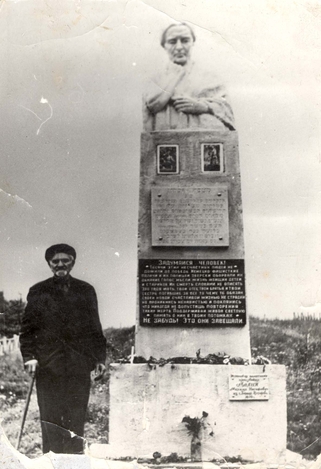|
Germany, with the enthusiastic cooperation of Romania, invaded the Soviet Union on 22 June 1941. As a reward
for providing oil, equipment, and troops, the Nazis gave Romania control of the region, named Transnistria, situated
between the Dniester River in the west and the Southern Bug River in the east, and bordered by the Black Sea in the south.
The territory had been part of the Soviet Ukraine during the inter-war period. Transnistria remained under the control of
the Romanians until the Russians forced them out on 20 March 1944.
The Jewish population of Tulchyn, living within the boundaries of Romanian-controlled Transnistria, suffered a different fate
from that of the Ukrainian Jews on the other side of the Bug River. Tulchyn's Jews were not subject to the mass killings
that awaited the Jews in Nazi-controlled regions. In September 1941 Romanian authorities established a ghetto in a small
Jewish neighborhood and ordered all Tulchyn's Jews into the ghetto. Shortly afterward Jews from Bessarabia and Bukovina*
were relocated to this ghetto, worsening the already severe overcrowding. Typhus flourished among the malnourished inhabitants.
By the end of the year the Romanian authorities, in an attempt to control the spread of typhus, decided to further isolate the Jews.
Three-thousand of them were herded into a Romanesque palace in the nearby town of Pechera; the palace had previously been used as a
tuberculosis sanitorium. Only about one-hundred-twenty Jews remained in Tulchyn – mostly skilled artisans. These remaining Tulchyn
Jews were soon to be joined by still more Jews from other regions of Transnistria, from Bukovina, and from Bessarabia.

Bug River
Pechera was a new kind of camp. The Jews held in the tuberculosis sanitorium were not given food, water, or medicine. They slept on
the bare floor and had no heat. To get water, the inmates of the sanitorium had to risk getting it from the nearby Bug River;
German soldiers on the far side of the river used these people for "target practice"!
*belonged to Romania, seized by the Soviet Union,
& returned to Romania by Germany.
|
The Pechera camp was not a death camp; there was no organized, industrial-style murder. Rather, the Pechera Jews were formed into
work crews and put to work on local road projects. However, there were incidents of spontaneous violence. Pechera Jews died from
violence, disease, and starvation. It is estimated that of eleven-thousand Jews sent to Pechera, 9,450 – 85.9% – died there.
Many of the three-thousand Tulchyn Jews who were sent to Pechera were women, children, and elderly; most of these died. The
able-bodied men had entered the army to fight the invaders and among them there were certainly some combat deaths. Some
Tulchyn Jews were evacuated by the Soviets to Tashkent. The Jewish Refugees in Tashkent database has records for
three-hundred-forty-six Tulchyn Jews who were evacuated in 1941 and 1942.

Labor Camp
The mass graves for the Pechera camp victims are located in the forest near the sanitorium where so many suffered. There
is a dedication to the Tulchyn Jews. The sanitorium has been turned into a clinic and currently serves the local community.
|